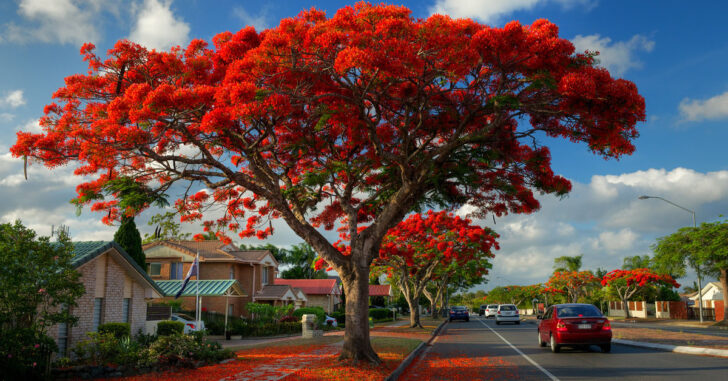Garden
Everything about Flamboyant Tree (Symbolism, Growth, Care & Bonsai)
Flamboyant Tree, when you google this term, we come across many names. The good thing is, all the words are other names for the famous tropical Flamboyant Tree.
Table of Contents
The Lovely Flamboyant Tree, What Is It?

Due to its dazzling appearance, Delonix regia is famous under the name Flamboyant. It belongs to the species group of flowering plants, belongs to the Fabaceae family, and is native to Madagascar.
To identify it, you can look at the fern leaves and flowers, which appear mostly in tangerine color. Fascinating flowers bloom throughout the summer and allow people to cool off in the stifling hot season.
Showy trees not only have an aesthetic value, they also produce fruit pods, which, like beans, are generally considered edible beans. However, we can’t find much information about it.
The blog has everything you need to learn about the Flamboyant Tree.
Flamboyant Tree – Scientific information:
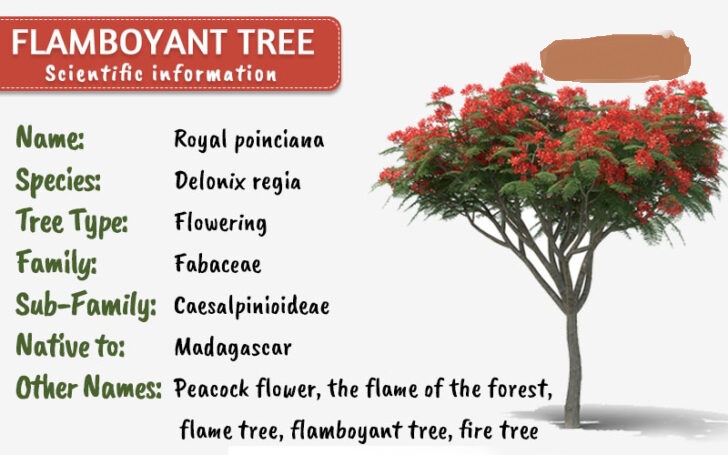
The scientific or botanical name of this plant is derived from two Greek words, Delos and Onyx. Delos means open and onyx means claw.
Its name refers to its showiness in gardens, as it has claw-like orange flowers that can be seen even from a long distance.
Instead of one or two, the tree grows flowers in clusters that look very charming, making it a best addition to roadsides, walkways, and ornamental botanical gardens.
How does Flamboyant Tree look Like?

Also known as the fire tree, the Flamboyant Tree is wider than it is tall. That is, it looks like a canopy or decorative orange umbrella standing to offer shadows from far away.
Giving people a delicate shade to lean out of the scorching summer sun and revel in the gentle winds would take a wide expanse.
The flowers appear in clusters, and each flower in the group is shaped like a claw – a five-toed claw.
Four of these will have spoon-like leaves in red, while the fifth will be slightly larger. When young, single petal develops into white shade flowers; however, you only have 2 to 3 days to taste this wonderful texture.
A few days later, when the Flower of the Showy Tree matures, the white petal turns red like its other brethren.
Poinciana Color – How Many Colors do You Find In Flamboyant Tree?
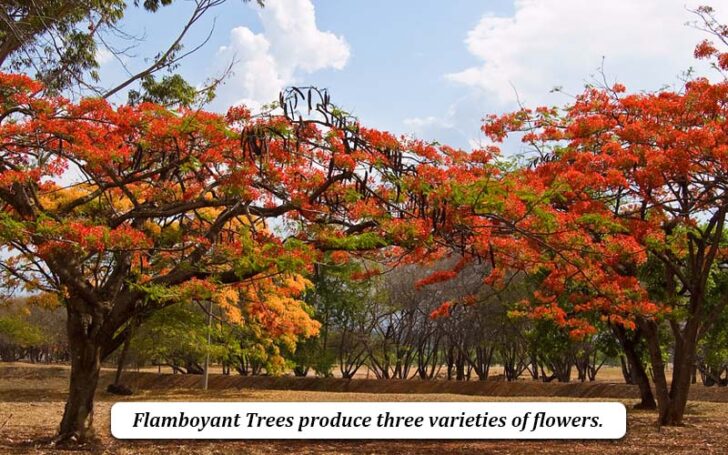
The royal poinciana, or flame tree, comes in different varieties that differ in germination, growth, and color.
You can find three types of showy flowers.
- Orange-Red
- Deep Red
- Golden
The most common flashy colors are orange; then you find red and then gold is the rarest.
In addition, some Delonix regia trees produce small flowers while others grow larger. Also, some varieties are easy to care for, while others are sensitive and begin to die in winter.
However, all showy tree varieties can bloom from their dead end in summer. This means that the tree never really dies.
You should know that the flowers actually make the Flamboyant tree color – Orange, Red or Gold.
Flamboyant Tree Symbolizes Pride, Hope, And Rest:
The flamboyant tree is known for its lasting stance and striking colors. But do you know that the tree has a deeper meaning than just being a decorative shrub?
Yeah! Its meaning is deeper and its presence at home is reported to bring positive feelings to the family.
● The flamboyant tree symbolizes pride:
Do you know beautiful summer plants that produce beautiful flowers? There are a few beautiful summer plants, such as dahlias.
However, you can’t find much of the foliage in hot weather, and sometimes you have to wait until spring to enjoy the blooms.
Royal poinciana is different from this. It blooms proudly during the summers and stands still and alone like a king, expressing and symbolizing pride.
● Flamboyant Tree Symbolizes Hope:
The showy tree, or Delonix Regia, can withstand droughts and harsh conditions, just like the miraculous Rose of Jericho invokes good luck, success, love, money and more.
Just like the rose of Jericho, the Showy Tree can survive drought, storm and salty conditions. Its roots stay in the water and never let the plant die.
In this respect, it symbolizes hope. It gives you a new meaning of life that even if you think it’s over, there is still hope.
● Flamboyant Tree Symbolizes Tranquility:
For some people, summer is all about enjoying the breezes and winds. Sleeping in a hammock in the shade of the tree is enough to define their idea of summer.
The Flamboyant Tree grows very tall and has a sturdy trunk that offers great shade, allowing you to enjoy summer afternoons and evenings while relaxing in a cool place.
Therefore, it also symbolizes rest and tranquility.
How about growing this fantastic tree in your home, garden or garden? check the next lines talking about do you want
Royal Poinciana or Flamboyant Tree Growth:
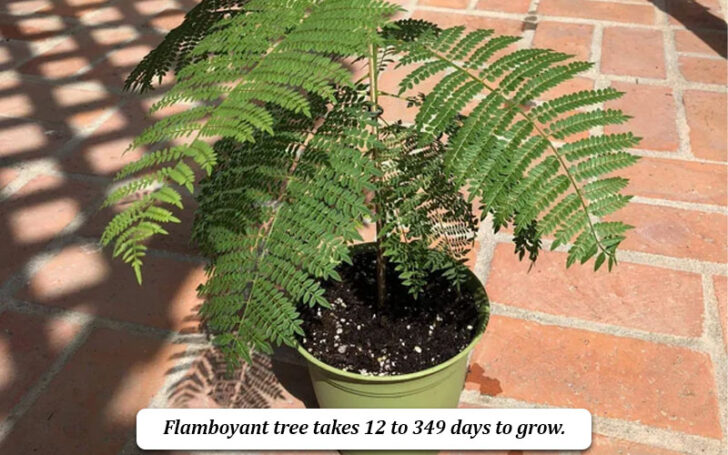
Here are some steps to show you how to grow a showy tree in your home, garden, yard or anywhere you want.
How Long Does It Take to Grow a Showy Tree?
Flamboyant has a tropical growth attitude, so seeds take a long time to germinate for seed. For example, the plant takes 12 to 349 days to grow.
Some of the methods and temperaments given below can promote or attenuate germination.
1. Get the Seeds:

As you read on this blog, there are varieties of showy trees; so when you go to the store to buy seeds, keep the following in mind:
- Ask the shopkeeper about the size of his flamboyant tree for what you need.
- Show him a picture or video of the tree you plan to grow.
If you have a Royal Poinciana tree grown in your area, you can also get the seed directly from the bark.
2. Get the Soil Ready:
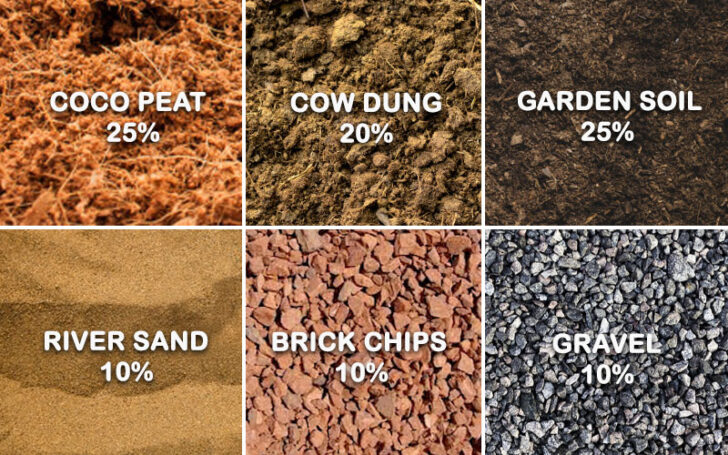
After purchasing the seeds, you will need to prepare the soil. Here is the method of preparing the ground for your tree at home:
| Soil | Quantity |
| Coco Peat | 25% |
| Cow Dung | 20% |
| Garden Soil | 25% |
| River Sand | 10% |
| Brick Chops | 10% |
| Gravel | 10% |
3. Selection Of The Pot / Place:
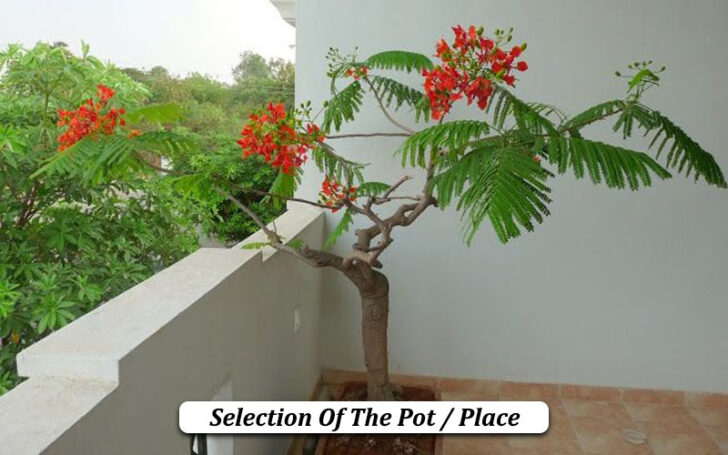
Before you get to this point, decide whether you want to grow it in the garden or a bonsai tree.
“Bonsai is the art or process of growing dwarf ornamental trees for indoors.”
- For yards: Make sure there is at least 4 to 6 feet of space between your house and tree roots because the roots will get very large over time.
- For the pot: Get an 18- to 20-inch pot
4. Seed Germination:
Before you bring your seeds to germinate, be sure to place them in regular tap water for 24 hours.
After that, take a can with a lid and hydrogen peroxide for both methods. Take a mixture of half a teaspoon of hydrogen peroxide and water.
Paper Towel / Tissue Paper Germination: In this:
- Make a bed of tissue paper and plant 4 to 5 seeds an inch apart
- Spray H2O2 mixed with water on the spores for light damping
- Now put another paper towel.
- Close the lid and leave for ten days or more until you see germination begin.
Repeat all steps for germination with coco peat; however, you will plant the seeds in coconut peat soil instead of paper towels.
5. The Planting:
You won’t be putting the plant in an oversized pot at the same time because sprouting will do better in a confined space.
Therefore, find disposable containers made of plastic and use them for sprouting seeds. For this:
- Add the soil you made by mixing different elements into the disposable container.
- Put the germinated seeds from the side with the small plant.
- Wet the container with water
After a few days you will see the germination start.
After the plant grows a little and starts to give leaves, you can easily plant it with the garden spiral hole planter gun and transfer it to the soil.
Check this video for more information:
How to Create Flamboyant Tree Bonsai?
For the Flamboyant Tree Bonsai, you will need to pay attention to the growth to keep the bark and roots smaller so they don’t come out of the pot.
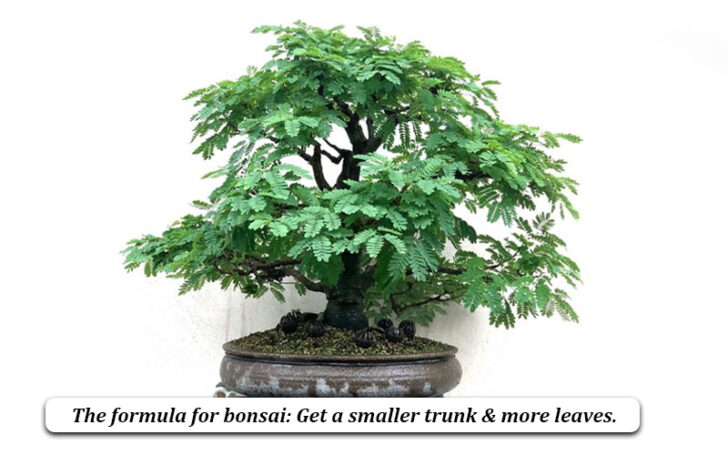
For this, pay attention to irrigation, sunlight conditions and other aspects such as:
1. Propagating:
Propagation is all about removing unnecessary leaves and large hardwood branches from the plant to control bark growth and keep it the smallest to remain suitable for pot and room size.
- Summers are the growing months for showy trees, so you will need to propagate the tree for bonsai as a must.
2. Watering:
Before pruning, stop watering your plant for three days to give it a dry period.
- Water immediately after pruning
- Return to normal watering routine after a few days of pruning
3. Fertilizing:
If you’ve seen your plant doing well and you haven’t fertilized it in months, do it now.
After pruning, your plant has lost most of its nutrient-forming branches. Therefore, you will need to fertilize immediately after pruning. For this, during the growing season:
- Solid Organic fertilizer form (every four weeks)
- Liquid Organic fertilizers (every week)
After flowering it gives the flower a white petal for 3 to 4 days and after that it turns red like the rest of the flower.
Some precautions to take when bonsaiing Flamboyant Tree:
Here are some important things for the healthy growth of your flamboyant bonsai tree:
1. Repot your plant after every year:
The showy tree is truly a ground plant and likes to absorb organic matter from it. However, bonsai of this plant in the pot allows it to use all the organic nutrients in it.
For this reason, you should repot your plant every year and plant it in a fresh, well-draining soil mix.
2. Pruning is done throughout the year:
Most people get confused when it comes to propagating and pruning a plant. Since both involve clipping, they take into account the same processes.
However, propagation is about cutting off hardwood branches to control growth, while pruning means pruning small leaves and small branches for tree care.
You will have to prune the tree in the spring and winter to control its growth and keep it looking fresh.
3. Helping Flamboyant Tree Against Pests And Diseases Is A Must:
The showy trees are very attractive to insects and pests such as Knock borers and caterpillars. Pests usually attack the flame tree during the winter months.
Therefore, you must ensure that no pests are attacking the beauty of your beautiful Gulmohar tree. To do this,
You can scrape off insects from the royal poinciana tree or use certain pesticides.
4. Do not overwater your plant:
Flame trees are summer trees and do not love overwatering. In fact, no plant can tolerate excessive watering.
Doing so can cause root rot. In this case, you will immediately transfer your plant to another pot.
Some Interesting Things About Flamboyant Tree:
Here are some interesting facts about the showy tree that you’ll love to hear:
1. Mature Flamboyant Trees Are Wider:
Flamboyant has more growth horizontally rather than vertically, so you’ll see a mature royal poinciana tree wider than tall.
2. Flamboyant Tree Is Drought Survivor:
Like extensive standing, tree roots are spread far and wide in the soil to bring water for plant growth. Therefore, if the roots are heavily drenched in water, the Flamboyant will be able to survive droughts.
3. Flamboyants Live For Many Years:
The showy trees survive, so you don’t really see this tree die. It will shed all its leaves and will give it again after a while.
In fact, Delonix regia seems to die during the winter but thrives again in the summer.
4. Flamboyant Trees Flowers Grow In Various Colors:
You’ll usually find the Firewood with orange blossoms, although some other colors are also available, although they are rarely seen. Colors are bright gold and ripe red.
5. Dwarf Delonix Regia Plants Are Also Available For Indoor Decoration:
Showy trees are bonsed and dwarf varieties are produced for interior decoration.
Flamboyant Tree Benefits:
Here are some excellent fact-based benefits you can derive from growing Showy Trees in homes, gardens and wherever you want.
1. You Can Grow Them Anywhere:
The flamboyant trees have a panoramic distribution, and their thick trunks are so deeply immersed in the ground that their roots are widely spread. However, they can be grown indoors by creating bonsai.
The grounds are very good and they sprout happily in pots. So you can grow it anywhere.
2. Flamboyant Tree Have Ornamental Importance:
The flame-like flowers and natural distribution of Flamboyant tree leaves make it the perfect piece to use for decorative purposes.
It is used for decoration on the roadsides, as well as at homes to beautify its surroundings.
3. Flamboyant Trees Are Shade Givers:
While everyone is looking for shade in the scorching summers, the colorful, flamboyant tree offers walkers, passers-by, birds and animals.
The second purpose of its cultivation in the world after ornamentation is its shade.
4. Flamboyant Tree Makes Edible Fruits:
Although there isn’t a lot of data and recipe on how to use the flamboyant tree in cooking, there is enough evidence to tell us that the Royal poinciana fruit is edible.
Many people make excellent coffee from beans removed from their pots.
Bottom Line:
We have highlighted all the necessary points about the Flamboyant tree, such as scientific information, common names, growth rate, how to make a showy bonsai tree.
We hope that the blog will be informatively useful to you. For any suggestions or comments, please give us feedback by commenting below.
Have a happy plant life. 😊
Also, don’t forget to pin/bookmark and visit our blog for more interesting but original information.

